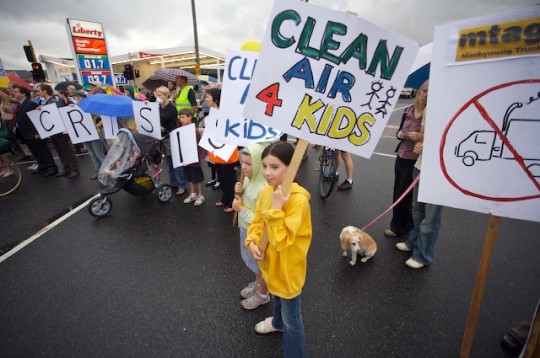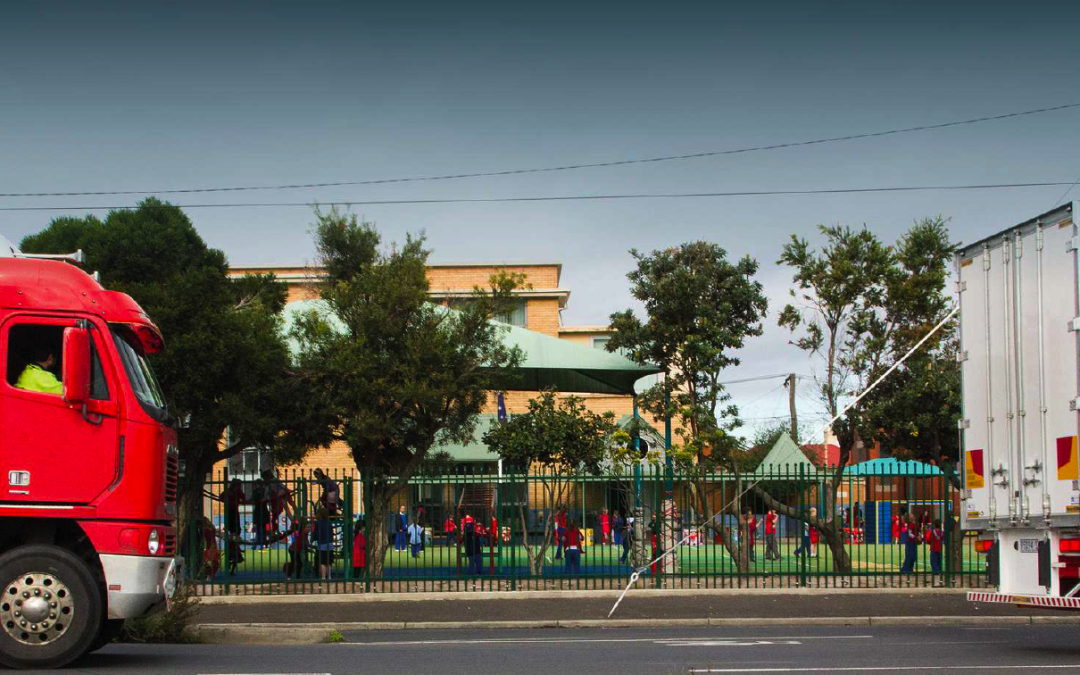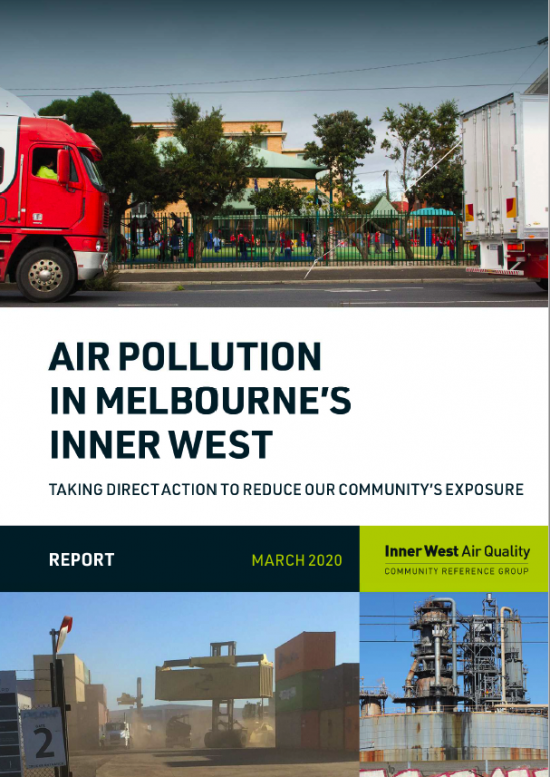The Inner West Air Quality Community Reference Group (IWAQCRG), of which MTAG is a member, today launched their report – Air Pollution in Melbourne’s Inner West – Taking direct action to reduce our community’s exposure. This Report is the most comprehensive report to date focussing on Melbourne’s Inner West. It paints an alarming picture of pollution, poor health outcomes and an urgent need for government action.
The IWAQCRG was established in 2018 by the Minister for Energy, Environment and Climate Change and Minister for Roads and Road Safety. The Group was entrusted by the Victorian State Government to investigate air pollution in Melbourne’s inner west (Brimbank, Hobsons Bay and Maribyrnong local government areas). Comprising of local community, environment groups and local councils, the group met many times over a 15 month period. Their work has culminated in this report launched today to coincide with the UN’s first International Day of Clean Air for blue skies.
The group found that the Inner West experiences pollution impacts at a far greater rate than the rest of Victoria.
The Group has made 26 recommendations with 65 supporting actions to improve air quality for Melbourne’s inner west communities.
For residents of the City of Maribyrnong, some important findings in the report include:
- Residents experience higher rates of hospitalisation for heart failure, asthma, heart disease and stroke and a higher incidence of lung cancer compared with the general Australian population. The City of Maribyrnong has the highest hospitalisation rate for stroke in all of Victoria. These are all common impacts of air pollution and cannot be explained by age, socio-economic status, smoking rates or obesity levels which are all close to or slightly below average.
- Air pollution monitoring in 2019 of both fine and coarse particulate matter (PM2.5 and PM10) regularly exceeded the State Government’s objectives at the majority of the six stations set up by the West Gate Tunnel Project. These monitors showed a steady deterioration in air quality over recent years.
- The current EPA air quality monitoring network in the Inner West is insufficient, especially along main roads, freight corridors and near industrial sites. It is not feasible to identify air pollution levels and the resultant risks to Inner West communities in the absence of more comprehensive monitoring.
- Transport pollution is higher in the Inner West than in the Melbourne metropolitan area as a whole, and heavy vehicles contribute disproportionately to this.
- Australia has one of the oldest most polluting truck fleets of all its trading partners. Around 26% of our trucks only meet Euro 1/I standard or have no pollution controls at all.
- In the absence of any action, the adverse effects of truck pollution will continue to grow. The Port of Melbourne’s truck traffic is expected to triple to 34,000 weekday movements by 2050.
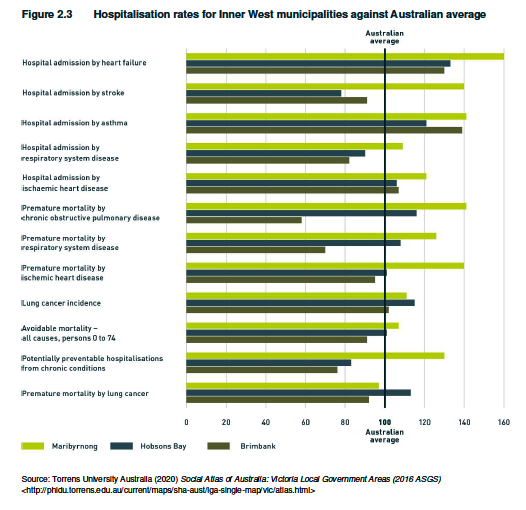
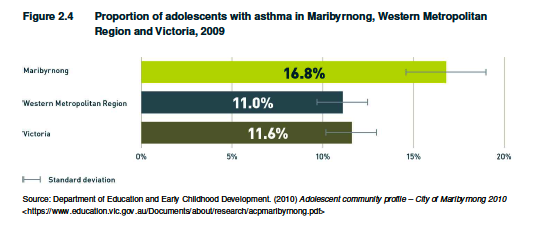
The Report lists 26 recommendations for action, designed to reduce air pollution from road transport and industry (including the West Gate Tunnel Project) and improve the planning framework, government regulation and policy, air quality monitoring and community education. These recommendations are in the areas of:
- Monitoring, analysis and reporting of air pollution
- Changes to the Regulatory and Policy Environment
- Transport emissions
- Industrial emissions
- Planning
The 65 supporting actions include:
- Increase the level of, and access to, Inner West air quality monitoring and information
- Develop a comprehensive policy to drive uptake of low or no emission vehicles, and reduce transport emissions, with a focus on the Inner West.
- Develop a comprehensive, evidence-based policy to minimise air pollution associated with the WGTP both during construction and once the tunnel opens. This includes installing tunnel filtration prior to opening as per the WGTP IAC recommendation, installation of green walls on the West Gate Freeway and measures to prevent the forecast truck increases on Williamstown Rd and Millers Rd.
- Permanently transfer the WGTP monitoring stations to the EPA
- Work with the Port of Melbourne Authority to develop a Clean Port Program, including banning or restricting port access for more polluting old trucks and providing on shore power so ships don’t idle in port polluting neighbouring residential areas.
- Introduce a large low emission zone bounded by Grieve Pde, Geelong Rd, Kororoit Creek Rd and Whitehall St.
- Incentivise businesses, particularly freight operators – to upgrade fleets to incorporate vehicles that are, at a minimum, Euro 5 / V equivalent or use alternate fuels
- Advocate to the Commonwealth to implement measures that will improve air quality in the Inner West
- Assess the feasibility of transforming the former wholesale fruit and vegetable market on Footscray Road into a container park, to reduce the proliferation of such parks in the Inner West and associated haulage of containers to and from them
- Consider the cumulative impact of historic Inner West community exposure to air pollution when making decisions regarding planning applications, developments and other initiatives.
- Amend the planning framework to support development of consistent local planning policies to improve environmental and amenity outcomes.
- Ensure that sensitive-use facilities, such as childcare centres, schools, aged care facilities and hospitals, are located at specified distances from existing air polluting industries and major transport corridors, including air, road and rail.
There is much much more detail in the report and we encourage people to read it for a more comprehensive understanding of the findings and recommendations. We have focused here on the City of Maribyrnong but our neighbours are also heavily impacted. For example Brooklyn has for many years been dealing with industry generated dust at levels that regularly exceed intervention levels for protecting human health. Our neighbours in Hobson’s Bay continue to be exposed to thousands of tonnes of sulphur dioxide from the Mobil refinery each year as well as impacts from trucks and shipping.
We thank the State Government for engaging with community on this issue. We wait with hope for a response.
Read the Report and learn more about the Group.
